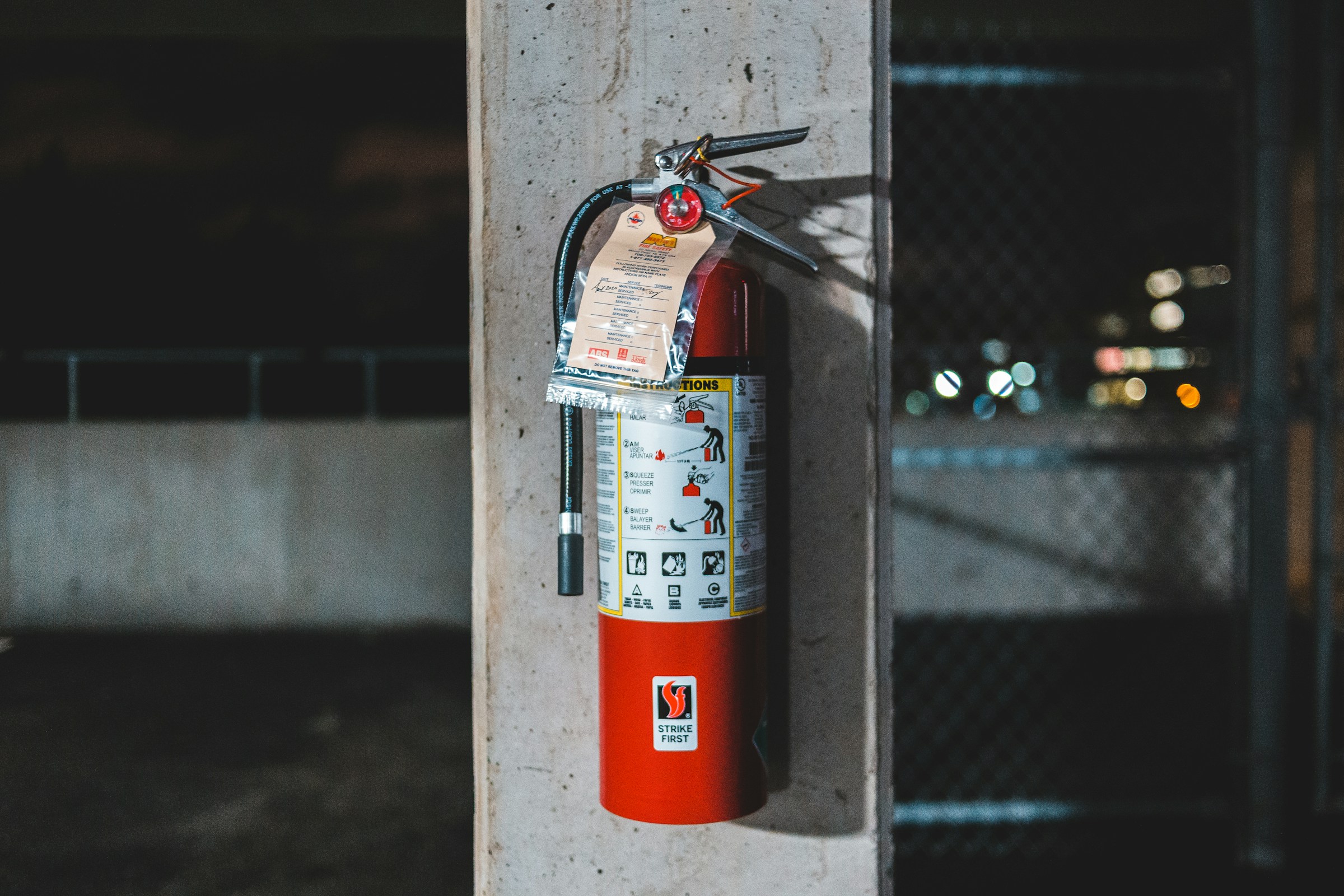Meeting fire safety regulations in multi-unit dwellings is essential not only for tenant safety but also for insurance compliance. Understanding the unique challenges of such properties helps owners and managers implement effective strategies. This guide explores practical solutions, from routine inspections to tenant education. By prioritising safety and regulatory adherence, you protect your investment and ensure peace of mind for all occupants. Explore innovative approaches that blend safety with compliance for a secure living environment.
Overview of Fire Safety Regulations in Multi-Unit Dwellings
In multi-unit dwellings, fire safety regulations are crucial for ensuring the safety of all residents. These regulations are designed to minimise the risk of fire and ensure a swift response if one occurs. Key regulations often include the installation of smoke alarms, fire extinguishers, and sprinkler systems. Regular maintenance and inspections are mandatory to ensure these systems are functional.
A découvrir également : Exploring the Impact of Your Property”s Location on Mortgage Rates in Liverpool
The importance of these regulations cannot be overstated. They are not only about protecting property but, more importantly, about safeguarding lives. Compliance with these rules is essential for both building owners and residents.
Furthermore, insurance compliance is closely tied to fire safety in multi-unit dwellings. Insurance companies typically require proof that a building meets all fire safety standards before providing coverage. This includes regular inspections and documentation of safety measures. Failure to comply can result in higher premiums or even denial of coverage.
A lire également : Assessing Whether a Fixed-Rate Mortgage is Right for Your UK Second Home Investment
Understanding these regulations and the associated insurance requirements is vital for anyone involved in the management or ownership of multi-unit dwellings. It ensures that all parties are protected and that the risk of fire-related incidents is minimised.
Risk Assessment Techniques for Fire Safety
Conducting a comprehensive risk assessment is pivotal in enhancing fire safety in multi-unit dwellings. This process involves several key steps to ensure thorough evaluation and effective mitigation of potential hazards.
To begin, hazard identification is crucial. This involves pinpointing common fire hazards such as faulty electrical wiring, flammable materials, and blocked escape routes. Recognising these risks early can significantly reduce the likelihood of a fire incident.
Following hazard identification, a detailed fire safety evaluation is conducted. This includes assessing the current fire safety measures in place and determining their adequacy. Are smoke alarms functioning properly? Are fire extinguishers easily accessible? These are critical questions that need precise answers.
Utilising tools and resources can enhance the effectiveness of the risk analysis. Fire safety software, checklists, and guidelines from local fire departments are invaluable in this process. They provide structured frameworks and expert insights, aiding in the comprehensive evaluation of fire risks.
In essence, a meticulous risk assessment not only identifies potential dangers but also informs the development of strategies to mitigate them, ensuring a safer living environment for all residents.
Practical Strategies for Meeting Compliance
Ensuring fire safety compliance in multi-unit dwellings requires a proactive approach. Developing a tailored fire safety plan is the first step. This plan should address the unique layout and needs of the building, incorporating specific implementation strategies that align with local regulations.
Regular maintenance and inspection schedules are crucial. Fire safety equipment, such as smoke alarms and sprinkler systems, must be routinely checked to ensure they are operational. Establishing a documented schedule helps in maintaining consistent checks, reducing the risk of equipment failure during emergencies.
Training is another critical component. Both staff and residents must be well-versed in fire safety protocols. Conducting regular fire drills and educational sessions can enhance awareness and preparedness. These activities ensure everyone knows their role in an emergency, facilitating a swift and organised response.
Incorporating these safety measures not only aids in compliance but also significantly enhances the safety of all residents. By focusing on practical strategies, building owners can create a secure environment that meets all necessary fire safety standards.
Documentation Processes for Fire Safety
Effective documentation is a cornerstone of maintaining fire safety compliance in multi-unit dwellings. Keeping accurate fire safety records is essential not only for meeting regulatory requirements but also for ensuring the safety of residents and the protection of property.
Essential Documents for Fire Safety Compliance
Key documents include inspection reports, maintenance logs, and safety certificates. These records verify that all fire safety equipment, such as smoke alarms and extinguishers, are regularly checked and functional.
Best Practices for Maintaining Accurate Records
To ensure precision, it is crucial to establish a consistent compliance tracking system. This involves updating records immediately after inspections or maintenance activities and securely storing them for easy access. Digital record-keeping systems can enhance accuracy and accessibility.
Importance of Documentation in Insurance Claims
Thorough documentation is vital during insurance claims. In the event of a fire, these records provide evidence of compliance with safety regulations, which can be pivotal in claim approval processes. Without proper documentation, insurance claims may be delayed or denied, leading to financial strain.
By prioritising documentation, building owners can ensure compliance, facilitate insurance processes, and ultimately enhance the safety of their dwellings.
Case Studies of Compliance Success
Exploring fire safety case studies reveals valuable insights into achieving compliance success in multi-unit dwellings. These real-world examples highlight effective strategies and best practices that property managers and owners can emulate.
One notable case involves a large residential complex that implemented a comprehensive fire safety plan. By conducting regular fire drills and ensuring all equipment was up-to-date, they not only met compliance standards but also enhanced resident safety. This proactive approach serves as a model for others aiming to improve their fire safety measures.
Another successful example is a property management company that utilised digital tools for record-keeping. By adopting a digital compliance tracking system, they maintained accurate and accessible records, streamlining inspections and maintenance. This practice significantly reduced the risk of non-compliance and facilitated smooth insurance processes.
Lessons learned from these case studies underscore the importance of regular maintenance, thorough documentation, and ongoing training. Key takeaways for property managers include the need for a tailored fire safety plan, the integration of technology for efficient record management, and fostering a culture of safety awareness among residents.
By examining these compliance examples, property managers can adopt proven strategies, ensuring both regulatory adherence and enhanced safety for all residents.
Checklists for Fire Safety Compliance
Utilising fire safety checklists is an essential tool for ensuring compliance and enhancing safety in multi-unit dwellings. These compliance tools serve as a structured guide to assess and maintain fire safety standards effectively.
Sample Checklists for Routine Fire Safety Inspections
Routine inspections are crucial, and sample checklists can simplify this process. A well-structured checklist should cover key areas such as smoke alarm functionality, accessibility of fire extinguishers, and clear escape routes. These checklists provide a systematic approach to identifying and rectifying potential hazards.
Creating a Customized Compliance Checklist for Your Property
Every property has unique needs, and creating a customized compliance checklist is vital. Tailor your checklist to address specific aspects of your building, such as layout and occupancy. This ensures that all critical areas are covered, enhancing overall safety.
Utilizing Checklists for Training and Audits
Checklists are not only useful for inspections but also play a pivotal role in training and audits. They serve as an excellent resource for educating staff and residents on fire safety protocols. During audits, checklists provide a clear record of compliance, facilitating smoother processes and ensuring all safety measures are up to date.
The Role of Insurance in Fire Safety Compliance
Understanding the insurance requirements for fire safety compliance is crucial for property managers and owners. Insurance companies assess fire safety compliance by examining the presence and functionality of essential safety features, such as smoke alarms and sprinkler systems. They scrutinise maintenance records and inspection logs to ensure these systems are regularly checked and operational.
Non-compliance with fire safety standards can have significant fire safety implications on insurance coverage. It can lead to increased premiums or, in severe cases, denial of coverage. This lack of coverage can result in substantial financial losses in the event of a fire incident. Therefore, maintaining compliance is not only a legal obligation but also a financial safeguard.
To effectively manage these risks, property managers should implement robust risk management strategies. This includes regular training for staff and residents on fire safety protocols and conducting routine inspections to ensure all safety equipment is functional. Additionally, leveraging insurance partnerships can enhance fire safety measures. Insurers often offer resources and expertise to help property owners meet compliance standards, thereby reducing the risk of fire incidents and ensuring comprehensive coverage.
Resources for Fire Safety Regulations
Access to fire safety resources is essential for understanding and implementing regulatory guidelines in multi-unit dwellings. Various organisations and websites provide valuable information on fire safety standards and practices.
Key organisations such as the National Fire Protection Association (NFPA) and local fire departments offer comprehensive resources. Their websites contain detailed regulatory guidelines and standards, ensuring property managers and owners stay informed about the latest fire safety requirements.
National and local fire safety regulations vary, but they share common objectives: protecting lives and property. Understanding these regulations is crucial for compliance. National standards often serve as a baseline, while local regulations may include specific provisions tailored to regional needs.
Training and certification programs are pivotal for enhancing fire safety knowledge. Many organisations offer courses that cover fire safety protocols, risk assessment, and emergency response. These programs ensure that both staff and residents are well-prepared for potential fire incidents.
By utilising these resources, property managers can effectively navigate the complexities of fire safety regulations, ensuring comprehensive compliance and enhanced safety for all residents.
Future Trends in Fire Safety for Multi-Unit Dwellings
Emerging fire safety trends are reshaping how multi-unit dwellings approach safety and compliance. Advancements in technology are at the forefront, offering innovative solutions to enhance fire protection. For instance, smart smoke detectors and integrated alarm systems provide real-time alerts, improving response times during emergencies. These technologies not only increase safety but also streamline maintenance by offering remote monitoring capabilities.
Anticipated future regulations may further impact fire safety compliance. As technology evolves, regulations are likely to adapt, incorporating standards for new equipment and systems. Building owners should stay informed about these changes to ensure ongoing compliance. This proactive approach will help in navigating the complexities of future regulatory landscapes.
Preparing for future challenges involves embracing these innovations and understanding potential regulatory shifts. By investing in cutting-edge fire safety equipment and staying updated on emerging regulations, property managers can enhance safety measures. This preparation is crucial in maintaining compliance and safeguarding residents against fire-related incidents.
In summary, staying ahead of fire safety trends and anticipating regulatory changes are essential for ensuring the safety and compliance of multi-unit dwellings in the future.






